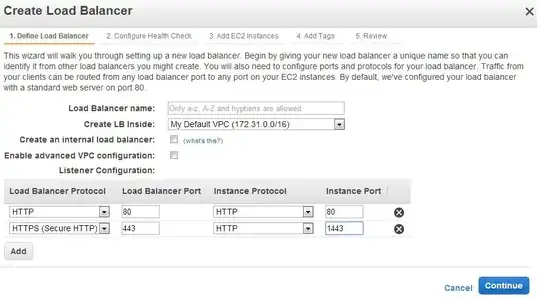I would like to know how to put my entire django site behind HTTPS. If anyone tries to come via HTTP I want that user to be redirected to HTTPS. Currently, firefox is giving me the error "Firefox has detected that the server is redirecting the request for this address in a way that will never complete."
My setup is :
1.One AWS load balancer (ELB) with an SSL cert.ificate The ELB has two listeners:
- load balancer port 80 (HTTP) pointing to instance port 80 (HTTP)
- load balancer port 443 (HTTPS) pointing to instance port 80 (HTTP)
2.One EC2 instance behind the ELB running nginx/uWSGI
nginx configuration
server {
listen 80;
return 301 https://$host$request_uri;
}
server {
listen 443 ssl;
set $home /server/env.example.com;
client_max_body_size 10m;
keepalive_timeout 120;
location / {
uwsgi_pass uwsgi_main;
include uwsgi_params;
uwsgi_param SCRIPT_NAME "";
uwsgi_param UWSGI_CHDIR $home/project;
uwsgi_param UWSGI_SCRIPT wsgi;
uwsgi_param UWSGI_PYHOME $home;
}
}
uwsgi configuration
# file: /etc/init/uwsgi.conf
description "uWSGI starter"
start on (local-filesystems
and runlevel [2345])
stop on runlevel [016]
respawn
exec /usr/local/sbin/uwsgi \
--uid www-data \
--socket 127.0.0.1:5050 \
--master \
--logto /var/log/uwsgi_main.log \
--logdate \
--optimize 2 \
--processes 8 \
--harakiri 120 \
--vhost \
--no-site \
--post-buffering 262144
3.Django settings file has the following settings specific to SSL/HTTPS
SESSION_COOKIE_SECURE = True
CSRF_COOKIE_SECURE = True
Any ideas how to properly setup HTTPS?
Thanks
